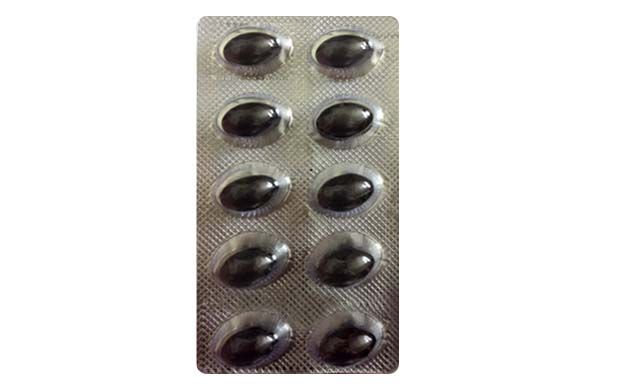Indications
- Bone diseases in ren al osteodystrophy
- Dietary supplement
- Bones weakening
- Better absorption
- Acidity & Heartburn
- Stomach ulcer
- Diarrhea
- Wilson's disease
- Acne
- Age related vision loss
- Anemia
- Anorexia
- Vitamin D deficiency
- Postmenopausal osteoporosis
About Composition
CRANBERRY EXTRACT
Cranberries are a rich source of dietary phenolic bioactive including Proanthocyanidins, Polyphenols &Anthocyanins(Cranberry bioactives) have favorable effects on blood pressure, glucose metabolism, lipoprotein profiles, oxidative stress, inflammation, and endothelial function. This unique combination of cranberry produces synergistic health benefits.
CRANBERRY CONTAINS PROANTHOCYANIDINS:
Proanthocyanidins (PACs) are a class of biologically active flavonoids found throughout the plant kingdom, and are one of the most potent antioxidants in nature. PACs are the phytochemical responsible for many of the health benefits associated with cranberries. Science has shown that cranberries contain unique A-type PACs, seldom found elsewhere in nature, that provide bacterial anti-adhesive properties and help promote urinary tract, gastrointestinal, and oral health. PACs are the "power of the cranberry".
The PACs found in cranberries have a different structure than those found in other fruits and vegetables which are associated with their anti-adhesion properties. Cranberry PACs help prevent the adhesion of certain harmful bacteria, including E. coliassociated with urinary tract infections, onto cell walls.
CRANBERRY CONTAINS POLYPHENOLS:
In the cranberry, specifically, polyphenols have been shown to reduce recurrent urinary tract infections, especially in women, help promote circulation and protect the body's cells and tissues from oxidative stress. The polyphenols found in cranberries have been shown to promote a healthy urinary tract and exert protective benefits for cardiovascular disease and other chronic conditions. Polyphenols provided by cranberries appear to be of a rather rare subtype. Whereas most berries and fruit contain a so-called B-type proanthocyanidin, cranberries are rich in A-type proanthocyanidin. The researchers believe that the anti-adhesive capacity of this polyphenol is the reason cranberries can help clear and protect against urinary tract infection (UTI).
CRANBERRY CONTAINS ANTHOCYANINS:
The major anthocyanins in cranberry are galactosides and arabinosides of cyanidin and peonidin. Because of their superior antioxidant efficacy, cranberry anthocyanins may be expected to inhibit oxidative processes linked to tumorigenesis. Amounts of anthocyanins are remarkably high in cranberry, contributing to the color of the fruit and derived foodstuffs, as well as the potential effects on human health. American cranberry is one of the rare foods that comprise glycosides of the 6 aglycones of the anthocyanidin family: cyanidin, peonidin, malvidin, pelargonidin, delphinidin, and petunidin.
CRANBERRY EXTRACT FOR AN ENHANCED EFFECT:
Cranberries have been used in the treatment of UTI for many years and are now regarded as a non-pharmaceutical approach for the treatment and prevention of simple UTI infections. Like D-Mannose, cranberries are effective in the treatment of the majority of UTI caused by E. coli.
Cranberries and cranberry extracts acidify the urine, which reduces bacterial growth. Furthermore, cranberries also contain certain tannins called proanthocyanidins that have been shown to reduce bacterial adherence to the urinary tract wall. This is a significant benefit in the treatment of UTIs as adherence is essential for infection.
Urinary tract infections affect the urinary system, including the bladder and urethra, caused by the development of bacteria. Women are more likely to develop a urinary infection than men, and these infections are often recurrent and painful.
Cranberry extract prevents the infection from reoccurring by stopping the bacteria from attaching to the cells that line the bladder.
D-MANNOSE
D-Mannose is a monosaccharide, a simple sugar but unlike glucose it is absorbed eight times slower. Because it is hard for our bodies to absorb D-Mannose it passes straight to the blood stream, then through the kidneys into the bladder. Since it is not metabolized in the body like other sugars, it does not affect the blood sugar levels, and therefore is safe for the diabetic menu and does not cause weight gain.
D-mannose is a simple sugar that prevents adherence of certain bacterial strains to uro epithelial cells of the bladder. It prevents 90% or more of UTIs that are caused by the bacteria E.coli.
D-Mannose has antibacterial, antiviral and antifungal properties. It plays a key role in the formation of cytokines—the chemicals that make you feel achy when you're sick. Cytokines, in turn, stimulate the immune system to fight the parasitic invader.
CONDITIONS SUPPORTED BY D-MANNOSE:
- Urinary tract infections
- Bladder health
- Digestive health
HOW D-MANNOSE WORKS:
This simple sugar passes directly into the bloodstream and is absorbed more slowly than other sugars. As blood circulates through the kidneys, D-mannose molecules mix with urine and continue on to the bladder and urethra. All along the way, the D-mannose molecules support the urinary system's delicate ecological balance. Additionally, D-mannose blocks the lectinsand can prevent them from breaching your intestinal wall.
THE ROLE OF D-MANNOSE IN THE PREVENTION AND TREATMENT OF UTI's:
Pathogenic bacteria's pili "grappling hooks" are specially designed to attach to a simple carbohydrate called D-Mannose, which is found on the cell surface receptors of the urinary tract host cells. When isolated urinary tract cells are bathed in D-Mannose, it acts as molecular "chaff." The bacteria bind to the D-Mannose in their environment instead of to the D-Mannose on the cells. This gums up their pili and prevents them from hooking onto urinary tract cells. Although D-mannose can eliminate UTIs as quickly as conventional antibiotic drugs, it is far safer because it does not kill E. coli or any "friendly" bacteria. Instead, it makes it impossible for E. coli bacteria to stick to the lining of the urinary tract, which allows the normal flow or urine to wash the bugs down the drain.
Side Effects
- If pregnant or lactating, consult your dietician before taking this product
- Cranberry juice and D-mannose have been associated with gastrointestinal upset, nausea, vomiting, and diarrhea in some individuals
- D-Mannose should not interfere with blood sugar regulation even for diabetics because so little is absorbed, though close monitoring is always advised. Consult your physician for more information
